
Carpets and rugs are two of the most popular types of floor coverings. But with so many brilliant benefits for both wall-to-wall carpeting and movable rugs, how to decide between the two for your own home?
Area rugs are a staple interior design tool for their ability to inject a shot of color and comfort underfoot. They can also be swapped out easily if tastes change. Not only that, rugs come in an abundance of shapes and sizes, in busy prints and delicate patterns all elevated by their washability.
But that’s not to say there isn’t a place for fitted carpets. In fact, wall-to-wall carpet is making something of a comeback as Joe Hatton, design manager at Brintons says: 'While wooden floors have been center stage in many homes in the recent past, we have seen a dramatic rise in sales in the last few years, and in particular patterned carpets. Fitted carpets are back, and back with gusto.'
The key message is, whether it’s carpet or rugs that take your fancy, flooring ideas should never be an afterthought.
'We believe that no surface should be forgotten when creating a scheme and your floor is one of the largest areas in a room,' adds Katrina Dalley, interior design and trade sales executive at House of Hackney. 'Whether carpeting a room wall to wall or using a large statement rug, both can create impact and finish off a space.'
Let’s help you unravel the carpet vs rug debate with our designer words of wisdom.
Carpet vs rugs: the golden style rules to help you decide
Whether you want to cozy up a bedroom or zone a large, open-plan space, it’s important to explore the merits of carpet versus rugs.
'A well-chosen rug can function as a captivating focal point within a room, much like a beautiful piece of artwork,' declares Claire Garner, director, Claire Garner Interiors, 'While carpets can provide a soft and inviting surface underfoot.'
Both have their place in our homes as designer Mary Jo Major of Texas-based Rise Interiors says: 'I regularly add rugs or carpets to most places in a home with the exception of kitchen eating areas. It adds soundproofing, spatial definition and comfort underfoot. The con is that you have to vacuum pretty regularly in heavy traffic areas and get them professionally cleaned once a year. Not bad for something that brings you comfort and joy every day!'
The case for choosing carpet
Carpet will always cozy up a space

There’s nothing like stepping out of your bed and on to the plushy softness of a thick carpet – especially on a cold winter’s morning. That’s why so many of us – and so many interior designers – love using carpet in the bedroom. It’s the ultimate way to create a relaxed, cozy cocoon for sleeping, reading or simply chilling out after a long day.
'Carpets contribute significantly to the coziness and warmth of a space, providing a soft and inviting surface underfoot,' declares Claire Garner. 'They act as natural insulators, retaining heat during colder months and creating a comfortable environment for relaxation and socializing.'
'Wall-to-wall wool carpet is heavenly in a bedroom because it feels marvellous underfoot,' says Kentucky-based interior designer Bethany Adams. 'It's wonderfully sound-dampening and is naturally flame retardant which is why I usually insist on it in children’s room and on stairs.'
You can make bolder statements with carpet
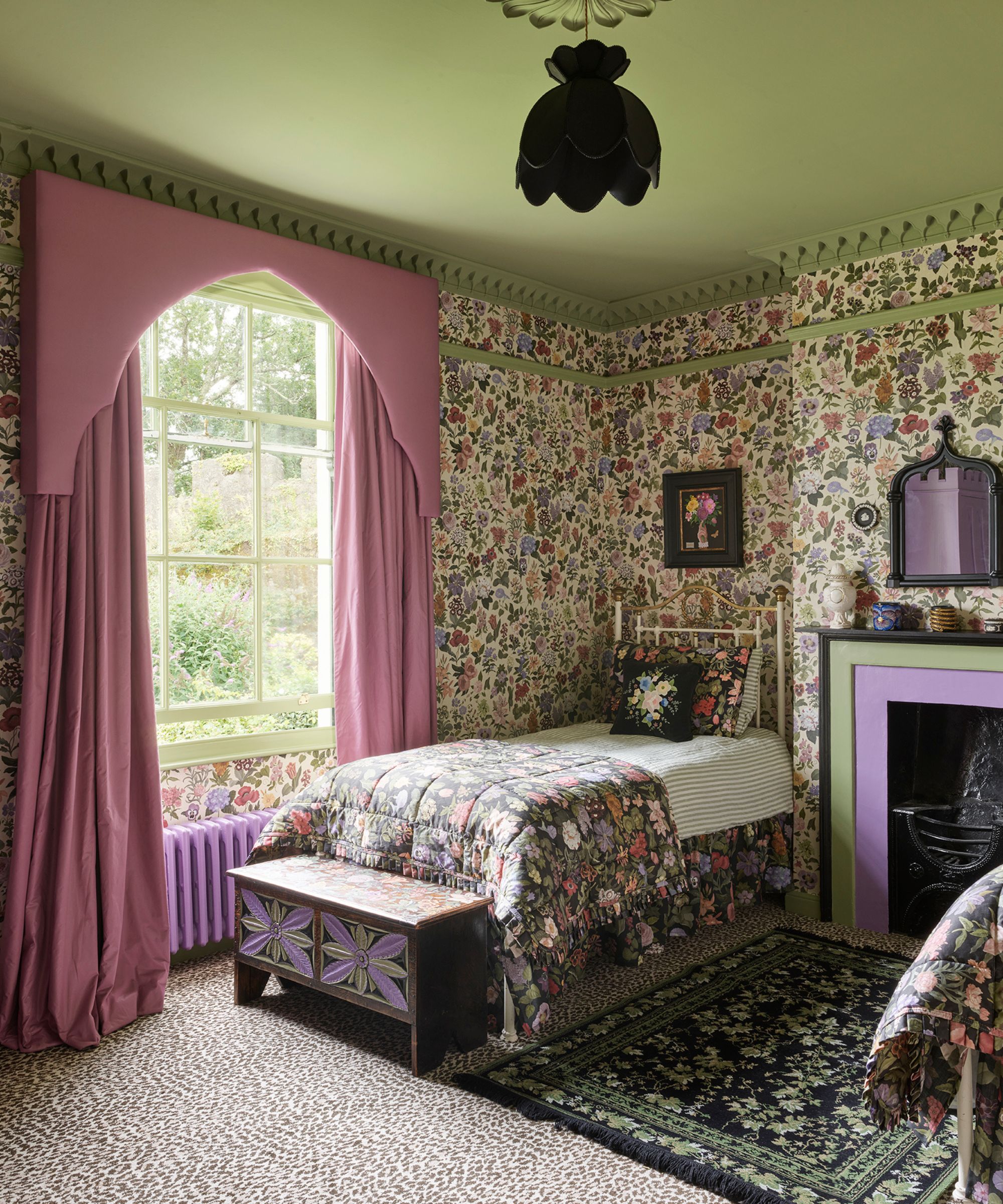
While neutral-colored carpets offer a blank canvas for a decorating scheme, bold patterns underfoot are a really cool way to inject masses of personality.
So why not embrace a tartan, floral, or botanic print carpet and let your floors become the focal point of your space? It’s a 2024 alternative to using print on the walls. Or else go for both in a maximalist mash-up. Remember, busy print carpets are also an amazing way to hide a multitude of sins in a busy family home.
'Bolder statement patterns always tend to lend themselves well to hallways, stairs, and landing spaces as these tend to be high-traffic areas,' explains Jodie Hatton, design manager at Brintons. 'As these areas aren’t ‘lived in’, they also lend themselves to creating more of a design statement, as there is a limited amount of space for furniture.'
Why not tear up the rule book and go for what you love,' declares Katrina Dalley. 'Bringing in something bold and fun is a great option and if you truly love it, will always be a great feature in your scheme.'
Carpet is great for soundproofing

Wall-to-wall carpet is a great way to dampen sound transmission and effectively reduce noise levels within the home.
This is a bonus in upstairs bedrooms or in high-traffic areas. Also in busy households with small children running around. 'It minimizes disruptions and enhances overall acoustic comfort,' explains interior designer Garner.
Californian-based designer Mary Beth Christopher adds: 'We mostly turn to rugs for floor coverings, but there is definitely a time and a place for carpet. We like to use it in kids’ bedrooms and bedrooms that are in mountain homes because it makes a space feel warm and soft underfoot.'
'Our recommendation is to choose carpet that is 100% wool, or mostly wool, because it can be treated and easily cleaned. Wool carpet will last longer, making it a good investment in the long run.'
You can get a really luxe finish
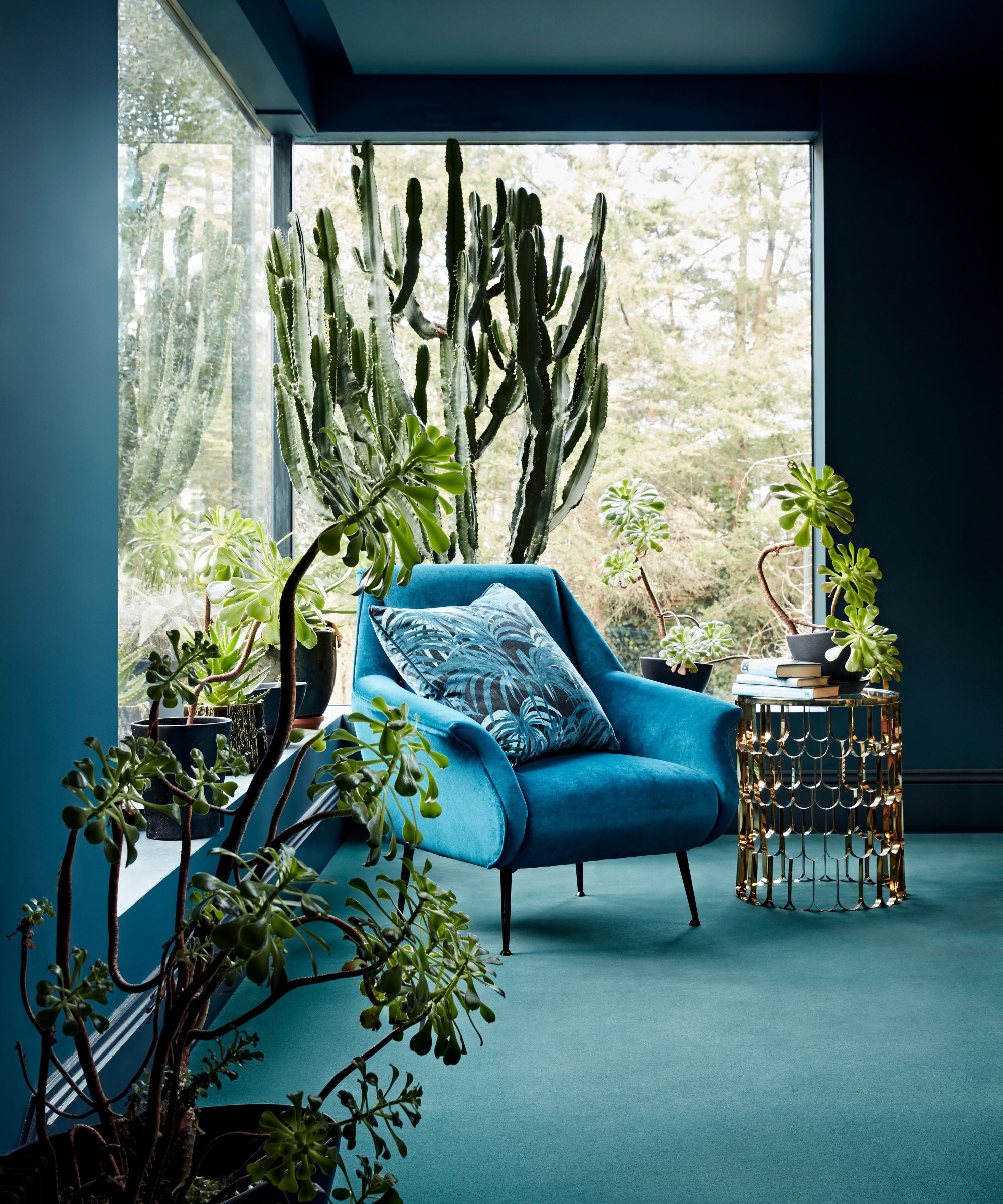
Loop and twist carpets are a popular choice, especially in hardwearing areas such as hallways, stairs, and living rooms. However, there is something oh-so opulent about a sumptuous velvet carpet. These smooth finish carpets have a short, dense, uniform cut pile that offers top notch comfort underfoot.
As such, velvet carpets are best suited to guest bedrooms and formal lounges, any rooms with a low footfall.
'The feel of a room is important and a very personal choice,' explains Hatton at Brintons. 'Some will want a calming, relaxing bedroom to retreat to while others may want more of a boudoir feel. For the ultimate luxury and plush feel, take a look at a velvet option.'
Their are eco-friendly options too
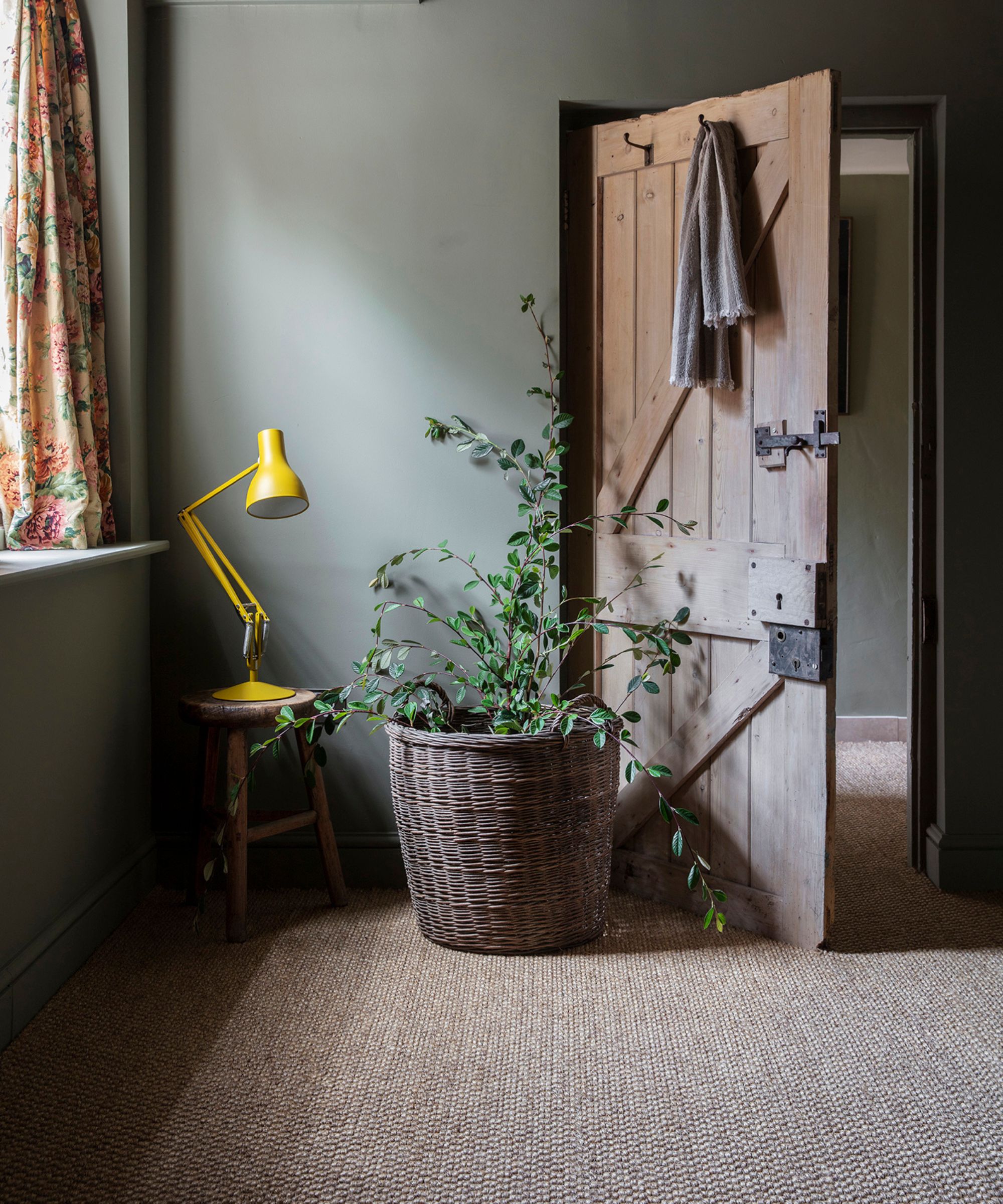
For an ethically sourced option, why not harness the benefits of natural plant fiber carpets? In a range of different fibers and weaves, they are also comforting underfoot.
'Hardwearing and kind on the planet, there is a natural fiber flooring to suit all interior design styles, from rustic country to modern and minimalist,' enthuses Kirsty Barton of Alternative Flooring.
With glossy, yellow tones, jute is one of the most eco-friendly fibers, being fast and easy to grow. It’s one of the softer plant based carpets so better suited to low-traffic areas in the home. Sisal is a great all-rounder: incredibly strong, with dark flecks to hide a multitude of sins and can be easily dyed to different shades
Look to seagrass for a super natural choice. It cannot be bleached or dyed and is often hand spun and hand woven for a naturally crafted look. Avoid using on the stairs as seagrass contains natural oils that can be slippery underfoot.
For busy areas of the home, consider hardwearing coir. It has a fibrous and slightly coarser texture, perfect for hardworking entryways and boot rooms.
The case for choosing rugs
Rugs are less of a commitment to pattern and color

One of the major design benefits of using rugs in a design scheme is that they can inject a huge shot of color and pattern. Of course, carpeting can do the same, but a colorful area rug won’t dominate the room in quite the same way.
From bold animal prints to blowsy florals and graphic stripes, there’s a print and a pattern to suit every color palette. Not to mention different shapes and sizes.
'The nice thing about area rugs versus carpet is they can bring in pattern and color more than solid wall-to-wall carpet,' explains Texas-based interior designer Kim Armstrong. 'I love a wool hand knot, whenever the budget allows, for creating textural depth and richness. Wool is also extremely durable and will last forever.'
If budget is tight, a printed cotton and poly blend washable rug might do the trick. 'There are so many styles available, from modern, pop art to traditional,' adds Kim 'And I love how the print can replicate the textural aesthetic of a hand knotted rug.'
Don’t forget to consider the scale of the room and the repeat size of the print when choosing a patterned rug.
You can layer rugs
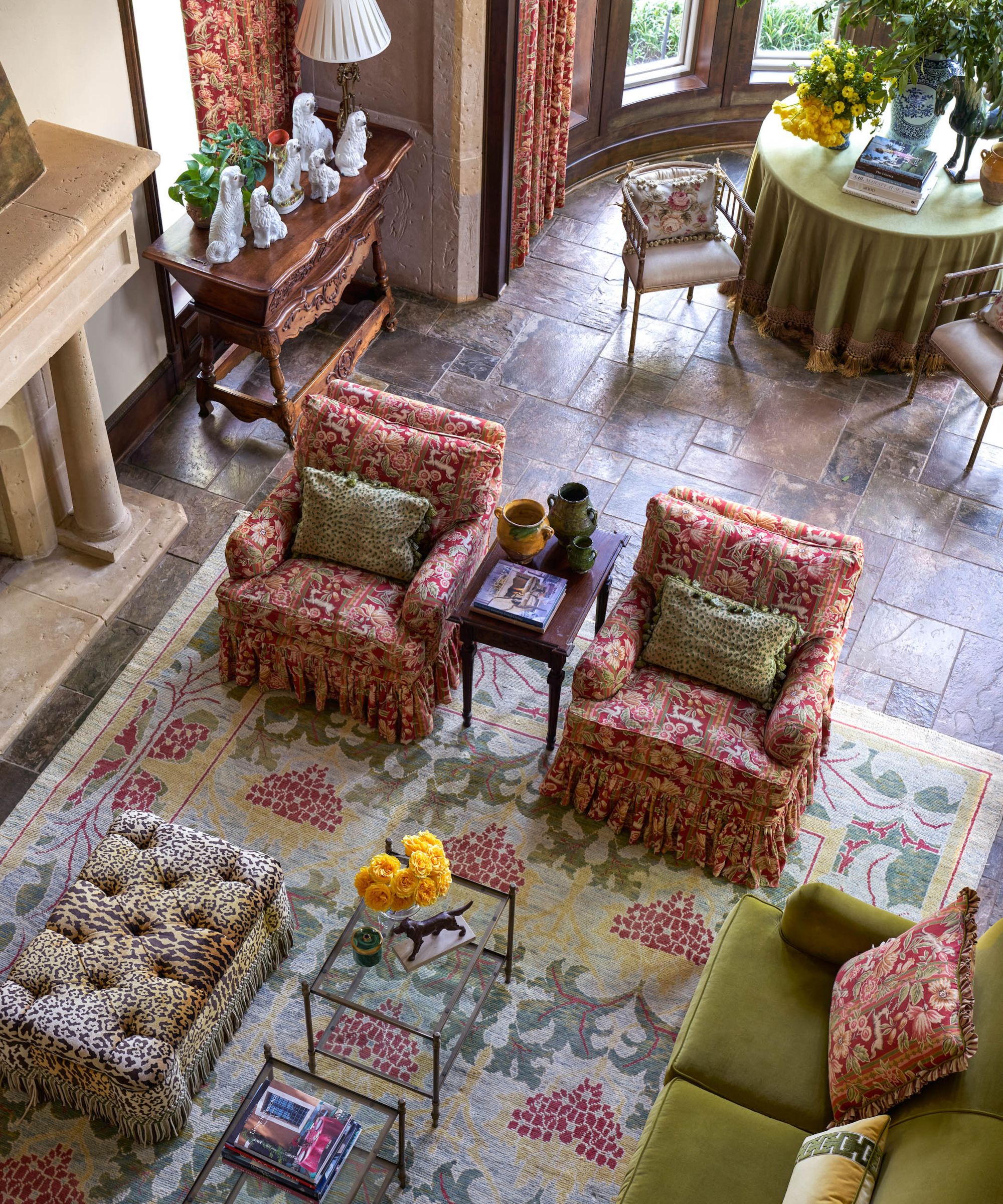
If you’re lucky enough to have rooms with original wood parquet flooring or limestone flags, the last thing you’ll want to do is cover them up.
That’s where the beauty of rugs comes in. You can keep hold of your original hard floors and then layer with rugs for added comfort and softness underfoot.
And why not steal a tip from the design experts by layering rugs over carpets too.
'When layering rugs, opting for a thinner pile or natural materials like sisal on top of carpeting can introduce beautiful textural contrasts and visual interest,' says designer Claire Garner. 'This layering technique adds depth and dimension to the space while infusing it with warmth and character.'
Rugs are super flexible
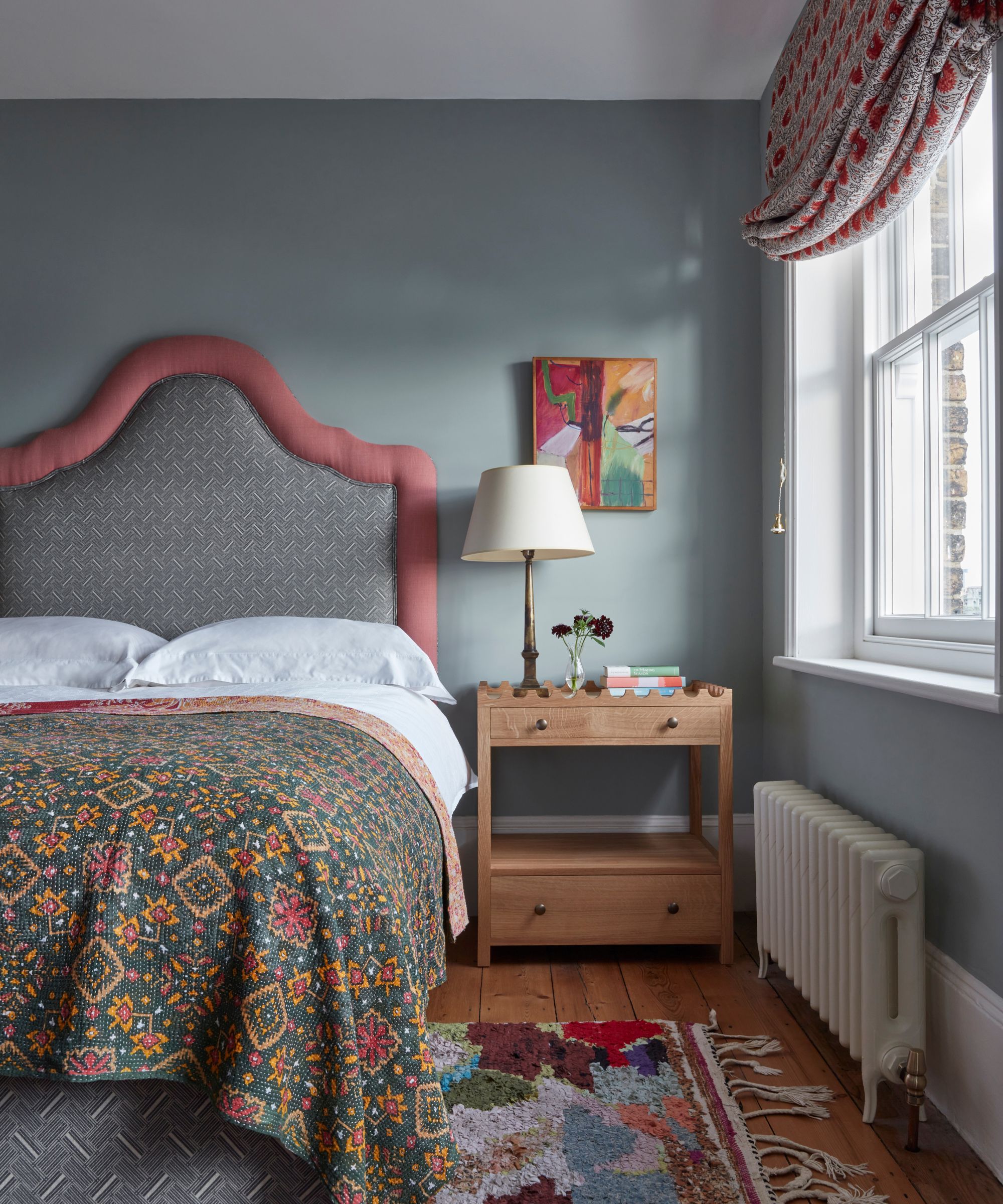
While wall-to-wall carpets are fixed in place, the portability and versatility of rugs is a huge plus point.
Rugs are an amazing design tool to refresh a room quickly. But they can easily be swapped out if your interior tastes shift or if the function of a room changes.
'My go-to is a rug with a sticky-backed underlay to anchor the room and provide warmth when the floorboards are drafty,' explains London-based interior decorator Olivia Outred. 'I always go for an inexpensive rug option, something that, like a cushion, can be swapped out, creating a new look and breath of fresh air for a room.'
Of course, rugs can often be an investment piece too so it’s important to consider the color with your overall design scheme and keep possible future schemes in mind.
Rugs can be much easier to clean
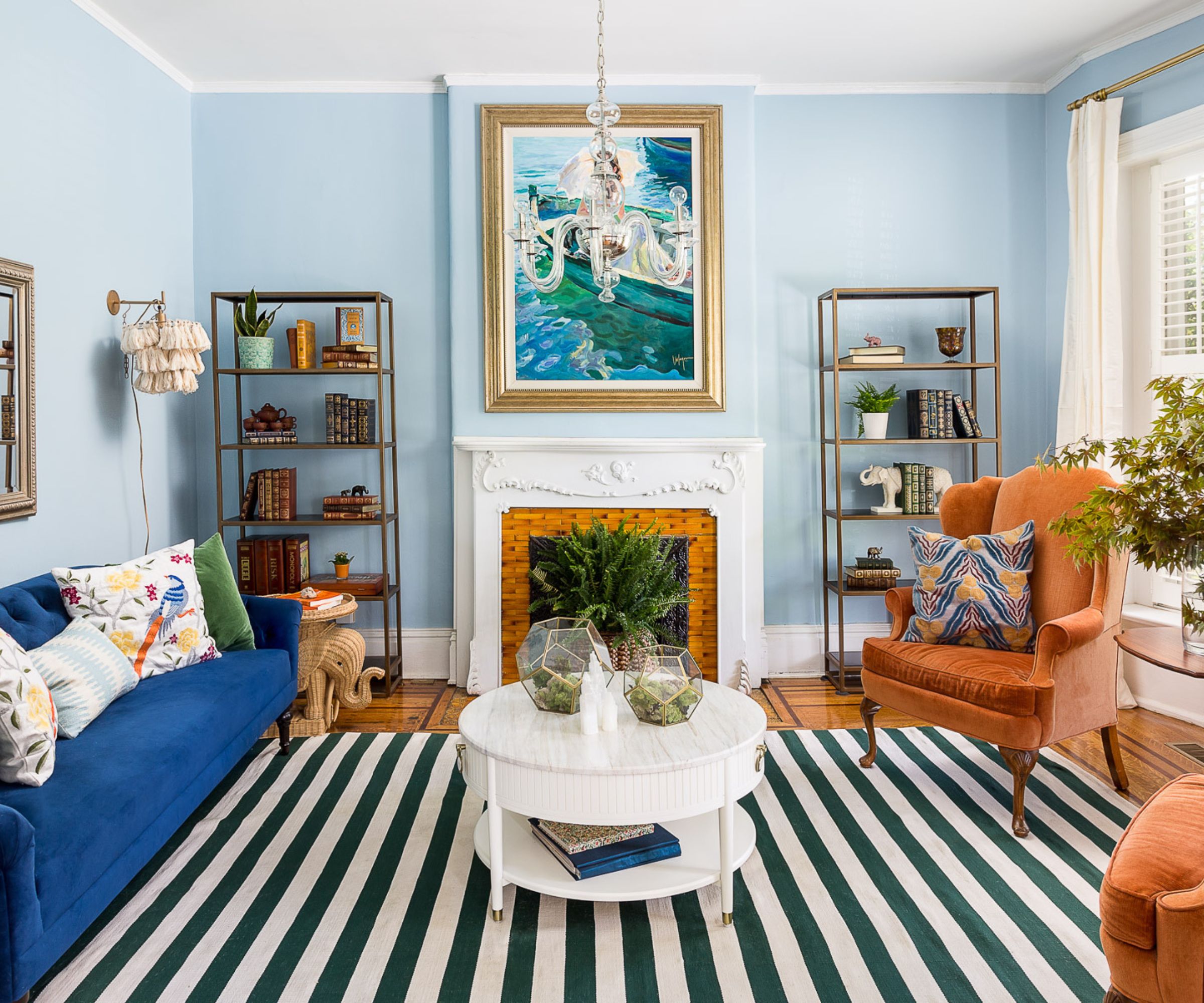
Whether you choose carpet or rugs – or a combination of both – it’s important to select the right material for the right space. Also, rugs have the added advantage of being able to be cleaned more easily.
'Jute or sisal is the perfect runner or area rug for a mudroom because, unlike wool, it doesn’t contain any electrostatic, which means the dirt particles cannot attach to the fiber. Any dried mud can be vacuumed up,' explains designer Bethany Adams. 'A small cotton rug is great in a bathroom because you can easily toss it into the laundry and give it a freshen up as needed.'
'This smart striped rug is actually an indoor-outdoor rug made from woven polypropylene,' she adds. 'The project was a redecoration for an active, young family with a dog and the brief was to incorporate fun colors, bold patterns and above all kid and pet-friendly materials Everything had to be easy to clean because messes were a given.'
Rugs can help zone rooms

Rugs are a brilliant design tool for zoning different areas within open-plan spaces. They can create visual boundaries without the need for physical walls. The result is defined living, dining and relaxation zones but with a cohesive flow throughout.
'When introduced to a space properly, rugs can create cohesion within a scheme,' says Kit Kemp, founder and creative director, Kit Kemp Design Studio, 'And they are fantastic for creating a statement, or zoning areas in a large open space. I love to use a rug under a dining table. Not only does it zone the dining area, it creates a sense of drama.'
'The use of a rug or carpet can completely change how a room looks and feels. A statement rug will zone a space drawing the eye and can become the focal point of a space, whereas a carpet will create a harmonious and expansive feeling," explains Kit Kemp.
You can make either work in any space, but the key is what's most practical for the room. And think about your design tastes too. If you like to switch things around regularly a rug might be a better choice, but if you are less fickle with your design choices invest in wall-to-wall carpet, you can always layer rugs on top. And think about who uses the space too. If you have pets or children it's far easier to clean a rug, some are even machine washable.







